Homeschooling doesn’t have to cost hundreds or thousands of dollars. As a homeschool veteran of 12+ years, I’ve discovered you can create a rich, engaging curriculum for under $50 per child. This isn’t theory—it’s what worked for my three kids, who are now thriving in higher education. In this guide, I’ll show you exactly what to buy, which free resources to use, and how to organize it all into a weekly schedule that actually works.
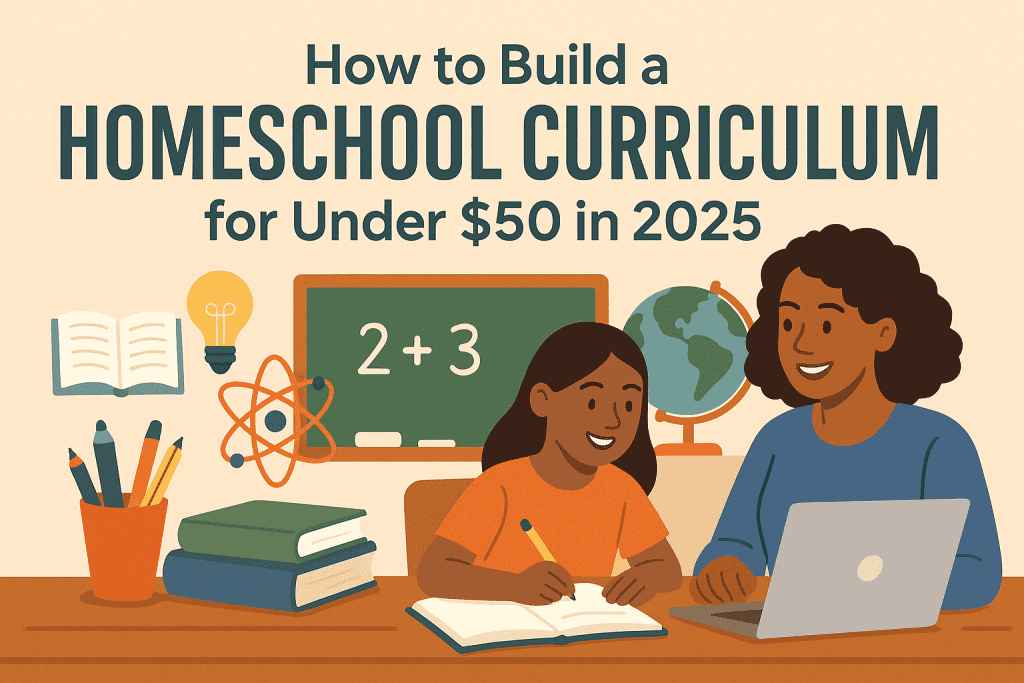
Your Complete $50 Homeschool Kit
Stop wondering what to buy. Here’s your exact shopping list:
| What You’ll Buy | Quantity | Cost | Where to Find It |
|---|---|---|---|
| Used Math Workbook | 1 per grade | $3-5 | Thrift stores, Facebook Marketplace |
| Library Card | 1 per family | FREE | Local library (applies online too!) |
| Printer Paper | 1 ream (500 sheets) | $8 | Dollar Tree, Walmart |
| Art Supplies Bundle | 1 complete set | $12 | Dollar Tree: crayons, markers, construction paper, glue |
| Science Materials | Household basics | $10 | Pantry + Dollar store: baking soda, vinegar, food coloring |
| Planning Pages | 20-30 printouts | $2-3 | Library printer or home |
Your Total: $35-38 (leaving $12-15 for extras like stickers or special projects!)
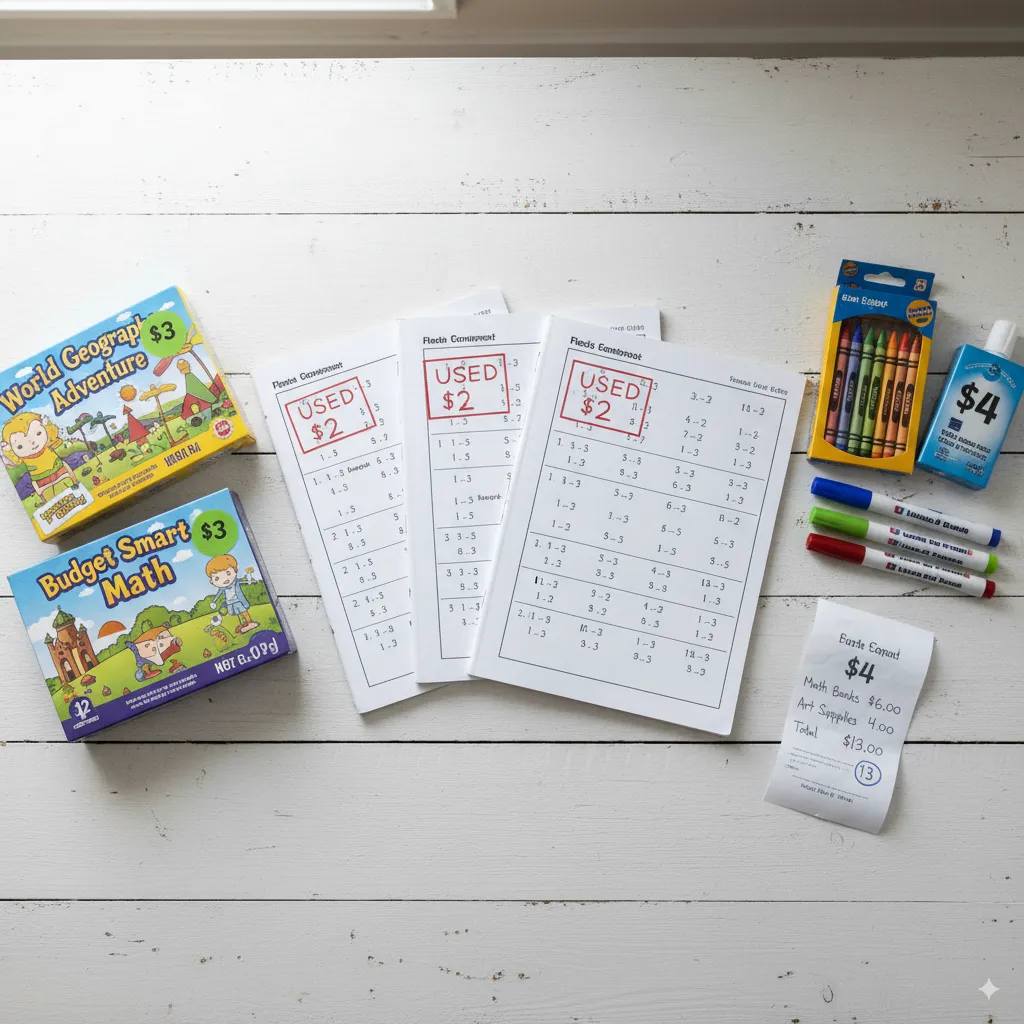
💡 Pro tip: Start with just the free resources (Khan Academy + library) for your first month. Add supplies as you see what your child enjoys most.
Why Choose a Budget Homeschool Curriculum?
When I started homeschooling, I fell into the trap of thinking expensive curricula were the only way to ensure my kids were “keeping up.” Spoiler alert: they’re not. A thoughtfully curated budget curriculum can be just as effective—sometimes more so—because it’s tailored to your child’s unique needs and interests. Here’s why going frugal makes sense:
Flexibility: Mix and match resources to suit your child’s learning style, whether they’re a visual learner who loves videos or a hands-on kid who thrives on experiments.
Customization: Build lessons around their passions—dinosaurs, space, or graphic novels—to keep them engaged.
Adaptability: If a resource isn’t clicking, swap it out without wasting money.
Financial Freedom: Save your budget for field trips, extracurriculars, or just breathing easier at the end of the month.
The heart of homeschooling isn’t fancy textbooks—it’s fostering a love of learning and critical thinking. A budget curriculum, when done right, delivers that and more.
My Personal Switch to Budget Homeschooling: A Case Study
Let me share a real story from my journey. In 2018, with two kids in elementary and one in middle school, I was shelling out over $600 annually on boxed curricula. The materials were shiny, but my kids were bored—lessons felt rigid, and we weren’t adapting to their interests.
That year, I decided to experiment: I ditched the expensive sets and built a curriculum using free online platforms like Khan Academy for math and library e-books for reading, supplemented with thrift store finds. The results? My oldest’s math scores jumped from average to advanced (based on free online assessments), and reading engagement soared—we went from reluctant 20-minute sessions to hour-long discussions on books like “The Hobbit.”
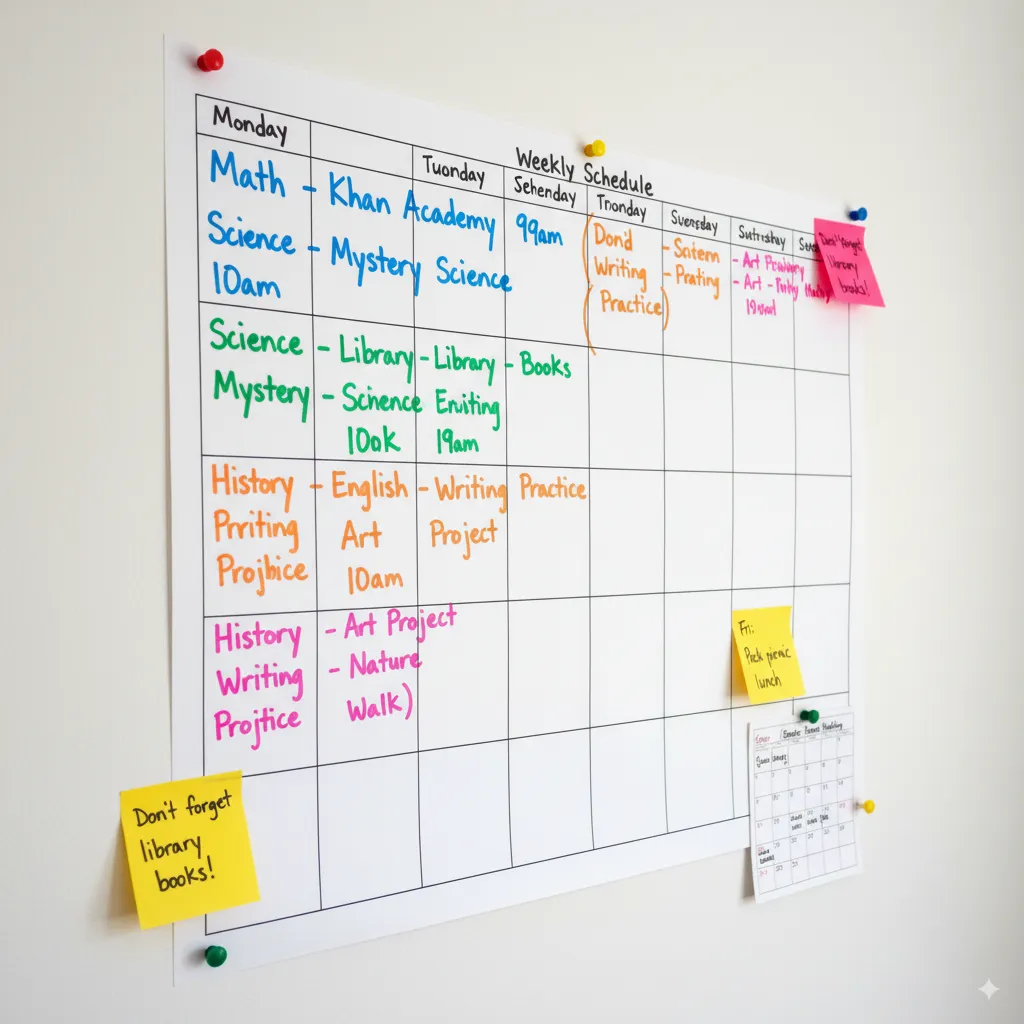
Overall, we saved $550, which we used for a family trip to a local science museum. Behavior improved too; fewer meltdowns because lessons tied into their passions, like turning a dinosaur obsession into history and science units. Fast-forward to 2025, and all three are thriving—my eldest is now in college-level courses, crediting our flexible approach.
Grade-Specific Weekly Schedules
Instead of one generic schedule, here are three clear examples tailored to different age groups:
For Kindergarten – 2nd Grade (Ages 5-7)
Sessions: 15-25 minutes each
Monday Sample:
- Math (20 min): Count with beans, Khan Academy Kids games
- Reading (20 min): Picture book from Libby + discussion
- Science (15 min): Nature walk, collect leaves
- Art (15 min): Draw what we found outside
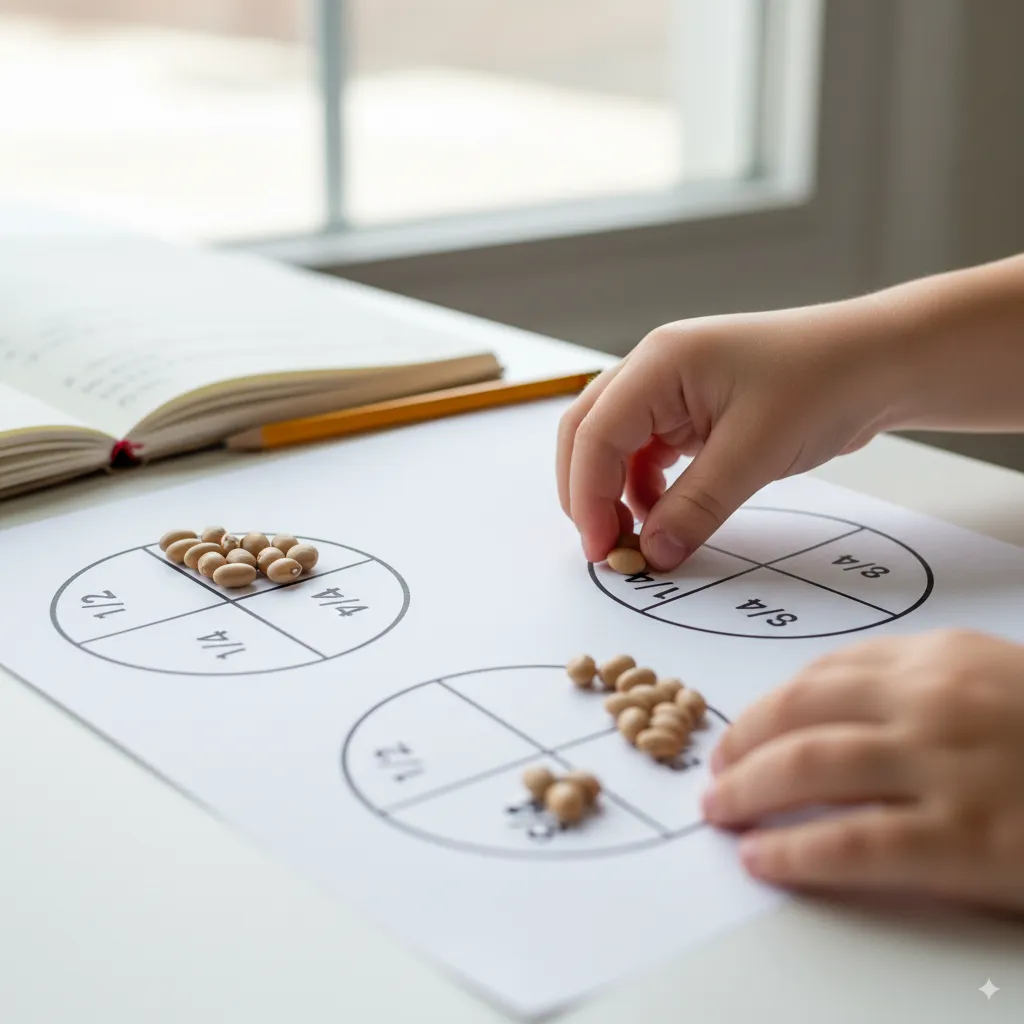
Key for this age: Hands-on everything, short bursts, lots of movement breaks.
For 3rd – 5th Grade (Ages 8-10)
Sessions: 25-40 minutes each
Monday Sample:
- Math (35 min): Khan Academy fractions lesson + practice with manipulatives
- Reading (40 min): Chapter book (independent or family read-aloud)
- Science (30 min): Mystery Science experiment + journal drawing
- History (25 min): National Geographic Kids article + timeline activity
Key for this age: Building independence, longer focus times, more structured learning.
For 6th – 8th Grade (Ages 11-13)
Sessions: 40-60 minutes each
Monday Sample:
- Math (45 min): Pre-algebra on Khan Academy with note-taking
- Reading (50 min): Literature analysis, discussion questions
- Science (45 min): Multi-step experiment with hypothesis and conclusion
- History (40 min): Research project using Smithsonian Learning Lab
Key for this age: Research skills, independent work, preparing for high school level thinking.
Free Resources to Anchor Your Curriculum
The internet is a goldmine for homeschoolers on a budget. These platforms have been lifesavers in my homeschooling journey and can form the backbone of your curriculum:
Math
- Khan Academy (Last verified: September 2025) – Free K-12 math with progress tracking
- Prodigy (Last verified: September 2025) – Game-based math platform for grades 1–8
- Zearn (Last verified: September 2025) – Interactive math lessons for K-8 with videos and digital manipulatives
Reading
- Libby (Last verified: September 2025) – Free ebooks/audiobooks through your library
- Epic! (Last verified: September 2025) – Many libraries offer free access to this digital library
- ReadWorks (Last verified: September 2025) – Free reading passages with comprehension questions
Science
- Mystery Science (Last verified: September 2025) – K-5 hands-on science lessons
- NASA Kids’ Club (Last verified: September 2025) – Interactive games and space science activities
- CK-12 (Last verified: September 2025) – Free interactive science textbooks and simulations
History & Social Studies
- National Geographic Kids (Last verified: September 2025) – Free articles, videos, quizzes
- Smithsonian Learning Lab (Last verified: September 2025) – Access to millions of digital resources
- Core Knowledge (Last verified: September 2025) – Free downloadable curriculum with history timelines
💡 Bookmark tip: Save these links in a “Homeschool Favorites” bookmark folder for quick daily access.
DIY Projects That Save Money
🎯 HowTo: DIY Flashcards from Cereal Boxes
Total time: 15 minutes | Cost: $1
You’ll need:
- Empty cereal box (free from your pantry)
- Markers or crayons ($1 at Dollar Tree)
- Scissors
- Clear packing tape
Step 1: Prep Your Cardboard
Cut the cereal box into 3×5 inch rectangles. One standard cereal box makes about 50 cards—perfect for math facts or sight words.
Step 2: Create the Content
Write math problems on one side, answers on the other. For reading, try sight words with simple drawings. Keep it colorful!
Step 3: Make Them Last
Cover both sides completely with clear packing tape. This makes them waterproof and kid-proof for months of use.
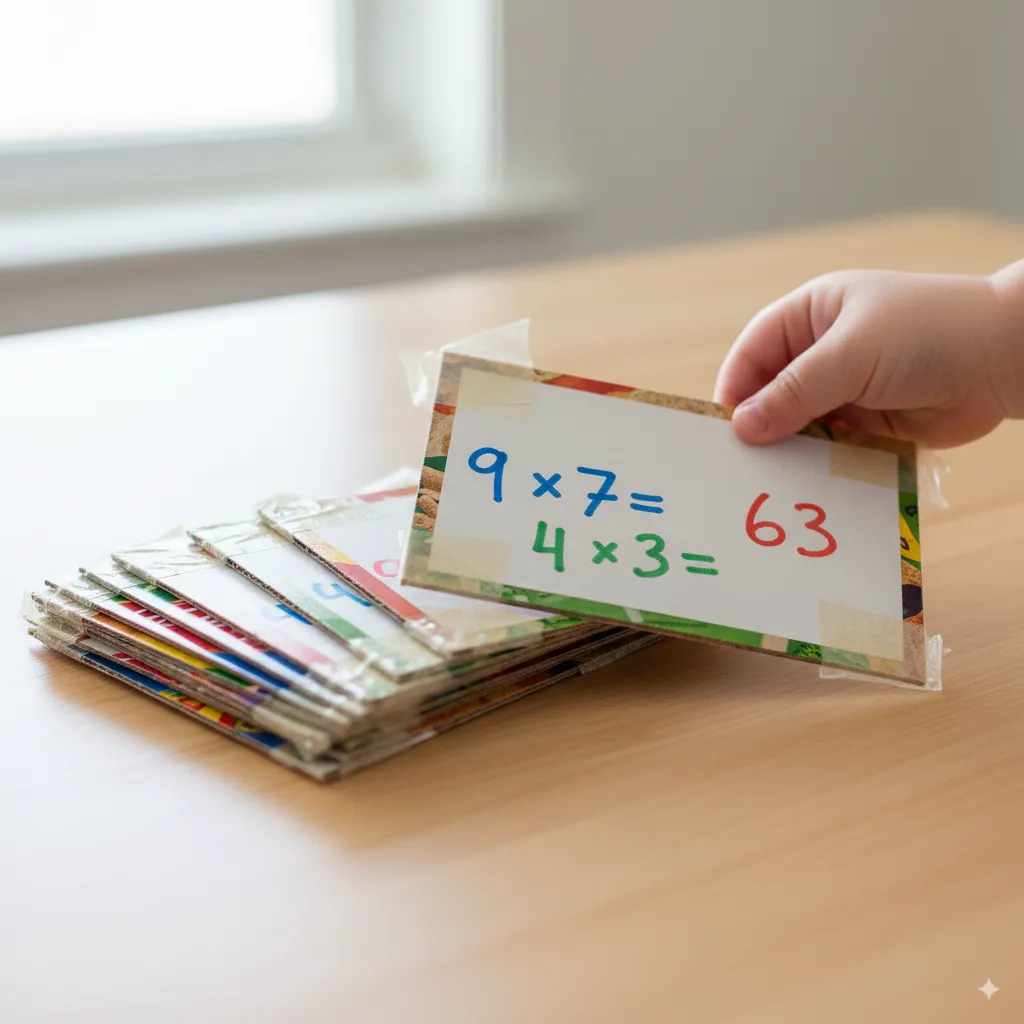
💡 How we use ours: Turn it into a game! Time challenges, sorting races, or hide them around the house for a learning treasure hunt.
🗺️ HowTo: Geography Puzzle from Free Maps
Total time: 20 minutes | Cost: $1
You’ll need:
- Free map printout (download from National Geographic)
- Cardboard (cereal box works great)
- Glue stick ($1)
- Scissors
Step 1: Print Your Map
Download a world map or USA map from National Geographic’s free resources. Print at your library for about 10¢.
Step 2: Mount and Strengthen
Glue your printed map onto cardboard backing. Let dry completely—about 10 minutes.
Step 3: Create the Puzzle
Cut along country borders (for world maps) or state lines (for USA maps). Store pieces in a ziplock bag.
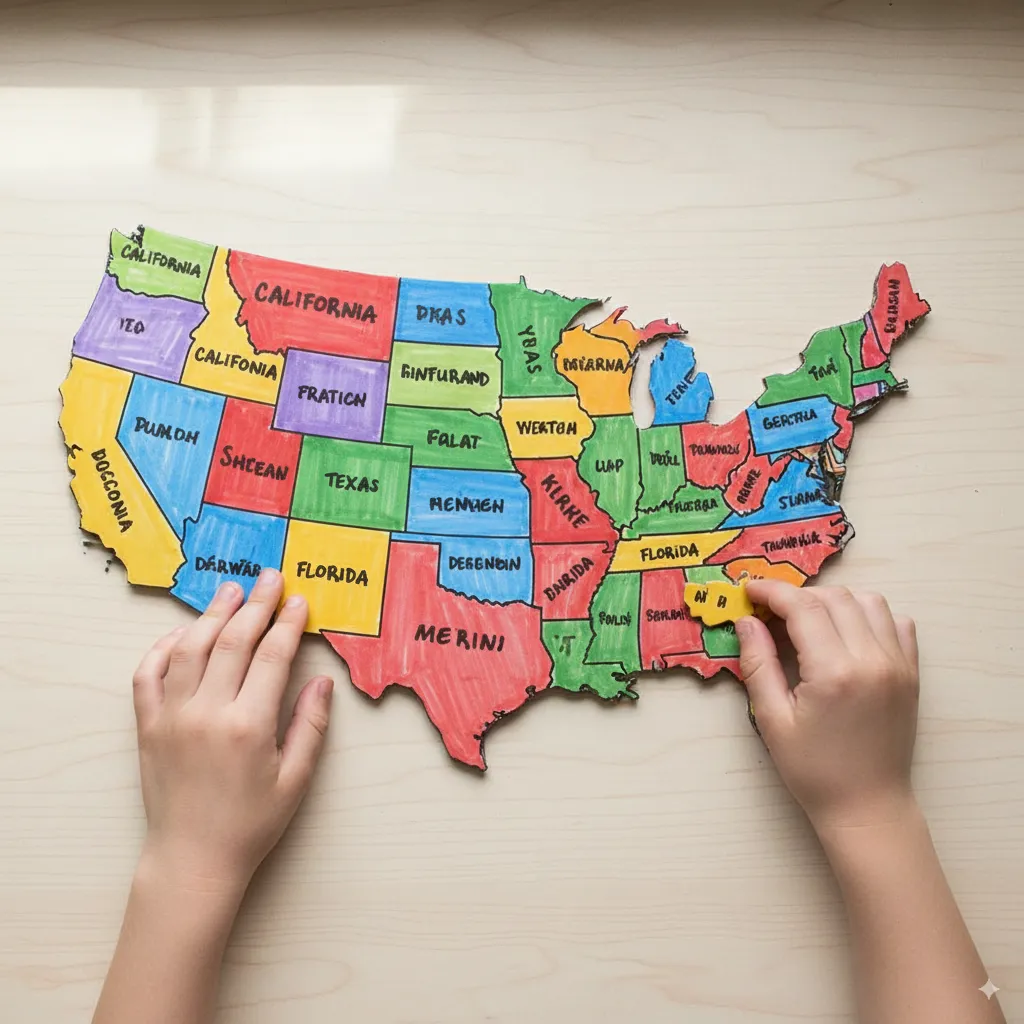
💡 Learning extension: Have kids research one puzzle piece each week. What’s the capital? What languages are spoken there?
Science Experiments on a Budget
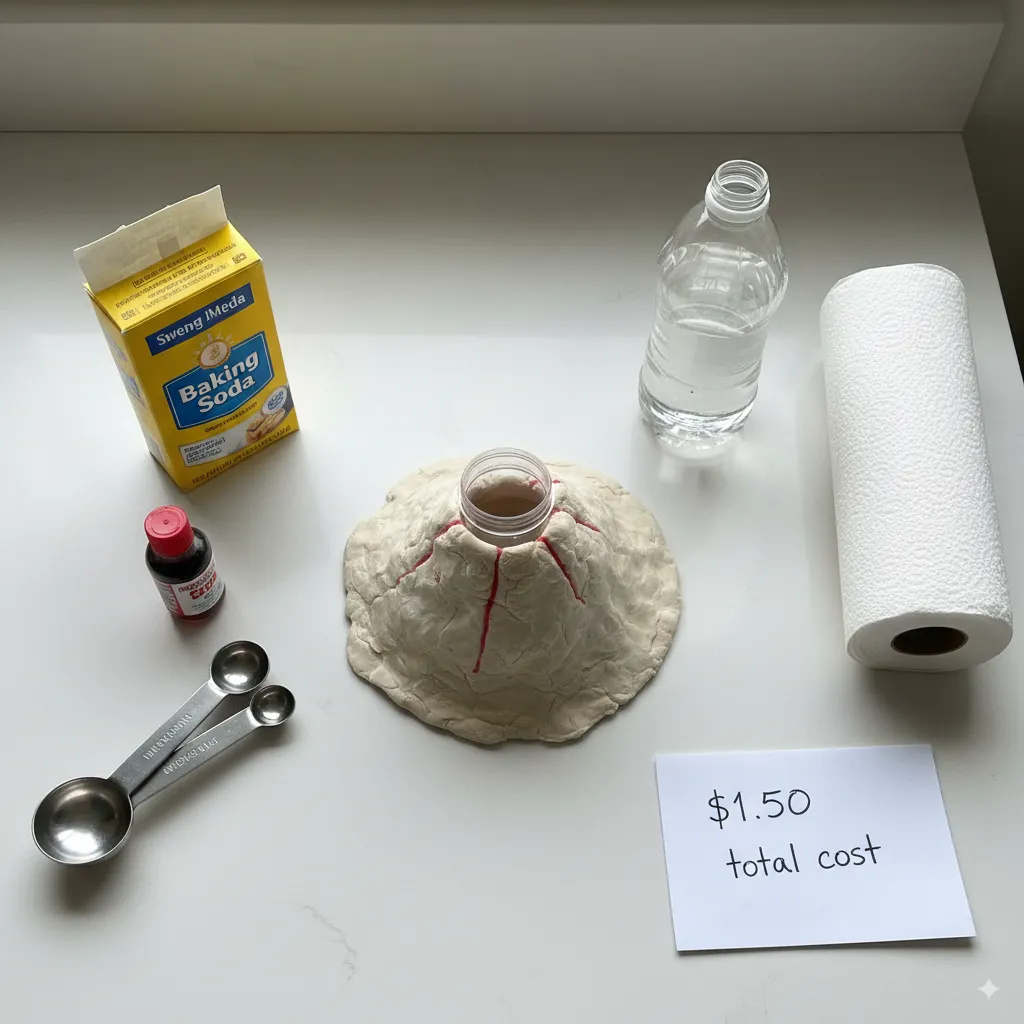
Student Work Samples
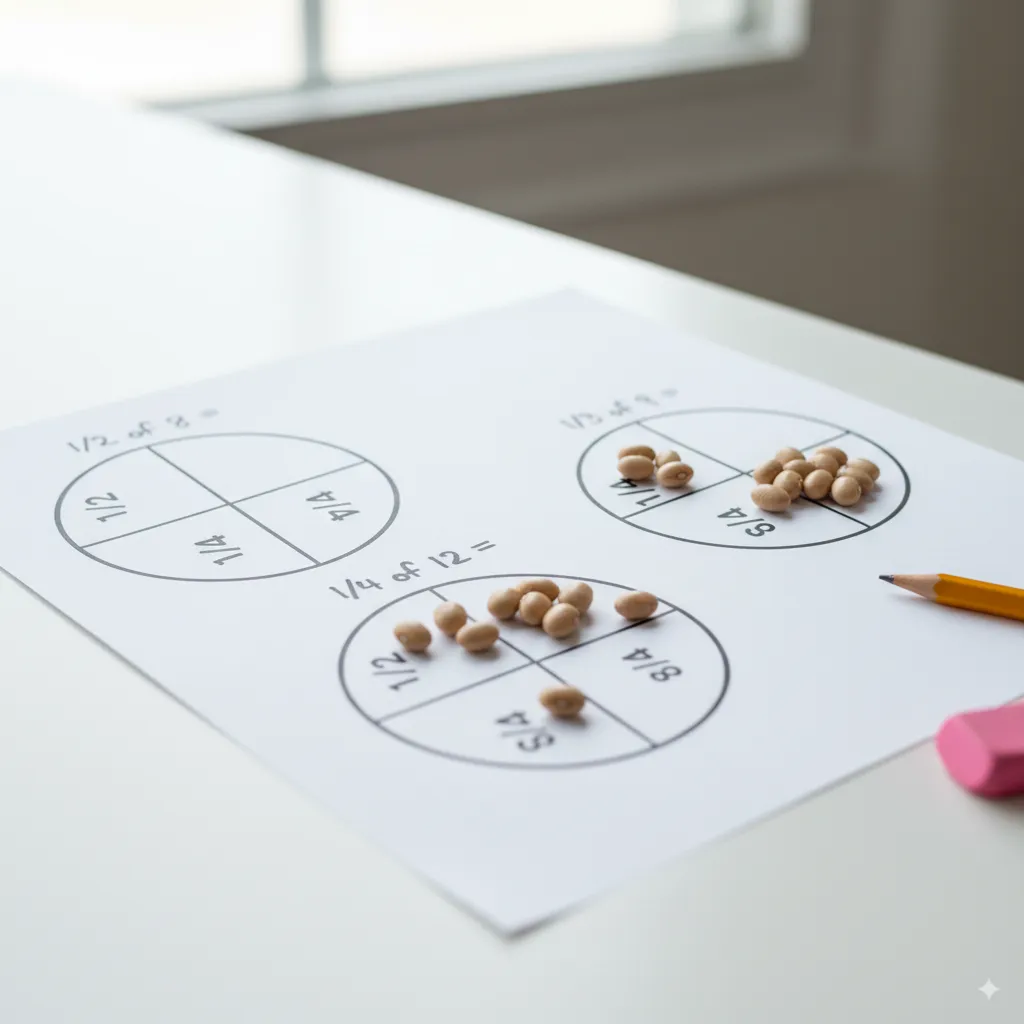

Affordable Supplies for Hands-On Learning
While digital resources are fantastic, physical materials add a tactile element that kids love. Here’s how to gather supplies without breaking the bank:
Thrift Stores & Garage Sales
- Textbooks and Workbooks: Often $1–$2 each
- Educational Games: Board games like Scrabble or math puzzles for $2–$5
- Books: Children’s books are often 25¢–$1
- Manipulatives: Puzzles, counting blocks, or even old Legos for $1–$3
Dollar Stores
- School Supplies: Notebooks, pencils, markers, and folders for $1–$2 each
- Science Supplies: Magnets, measuring cups, or plastic pipettes
- Art Materials: Construction paper, glue sticks, and crayons
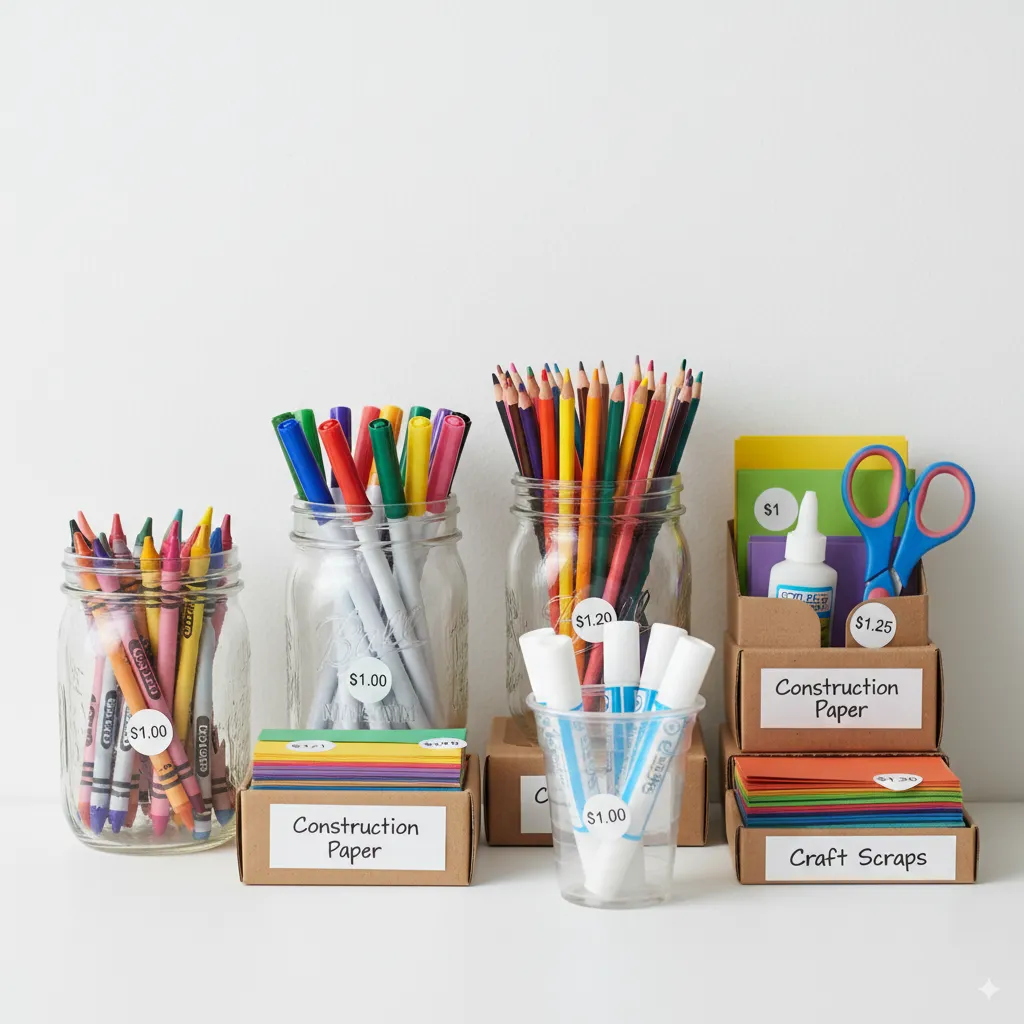
Seasonal Variations
Adapt supplies by season: In fall (September-October), thrift for leaf-rubbing kits. Winter? Snow experiments with free printables. Spring garage sales yield garden seeds for biology units.
Frequently Asked Questions
Q: Can you really homeschool for just $50 a year?
A: Yes! My family has done it for 12+ years. The key is leveraging free online platforms like Khan Academy and your local library’s digital resources, then spending only on basic supplies like art materials and printing.
Q: What’s the most important thing to spend money on?
A: Art supplies ($12 complete set from Dollar Tree) and some printing costs ($2-8 depending on usage). Everything else—math, reading, science content—can be accessed completely free.
Q: Which grade levels does this work for?
A: All of them! I’ve used these strategies from kindergarten through 8th grade. The same platforms (Khan Academy, Libby, etc.) adapt to different levels automatically.
Q: What if my child needs more advanced work?
A: Khan Academy goes up to college-level calculus and beyond. Most libraries also provide free access to advanced databases and college prep materials.
Q: How much time does this take to plan each week?
A: About 30 minutes on Sunday evenings using our free planning template. The beauty of this approach is that most content is pre-made—you’re just selecting what fits your child’s level.
📥 Free Resources
Weekly Planner Template
Never wonder what to do next. This planner includes:
- Separate tabs for K-2, 3-5, and 6-8 grade levels
- Pre-filled with free resource links
- Progress tracking columns
- Printable PDF version included
$50 Homeschool Weekly Planner
Free Resources • Structured Learning • Budget-Friendly
Week of: _____________
| Time | Monday | Tuesday | Wednesday | Thursday | Friday | ✓ |
|---|---|---|---|---|---|---|
| 9:00-9:20 |
Math
Khan Academy Kids
Counting with beans
|
Math
Khan Academy Kids
Shape recognition
|
Math
DIY flashcards practice
|
Math
Prodigy Math
|
Math Review
Fun math games
|
|
| 9:20-9:40 |
Reading
Libby App
Picture book + discussion
|
Writing
Letter practice
|
Reading
Epic! Books
|
Grammar
Sight words practice
|
Reading
Family book club
|
|
| 9:40-9:55 |
Science
Mystery Science
Nature walk
|
History
Nat Geo Kids
|
Science
Kitchen experiment
|
History
Timeline activity
|
Field Trip
Virtual museum tour
|
|
| 10:00-10:15 |
Art
Draw nature finds
|
PE
Outdoor play
|
Music
YouTube music lesson
|
Life Skills
Simple cooking
|
Free Choice
Child picks activity
|
Weekly Notes & Observations
What worked well: _________________________________
Challenges: _______________________________________
Next week focus: __________________________________
Budget Tracker
Track every dollar and see what works best for your family:
- Item purchased
- Price paid
- Source (thrift store, dollar store, online)
- Effectiveness rating (1-5 stars)
- Notes section
$50 Homeschool Budget Tracker
Track every dollar • Rate effectiveness • Stay on budget
Total Budget
Total Spent
Remaining
Avg Rating
Purchase Log
| Date | Item Purchased | Category | Price | Source | Effectiveness (1-5⭐) | Notes | Action |
|---|---|---|---|---|---|---|---|
Spending by Category
💡 Money-Saving Tips
- Best Times to Shop: Hit thrift stores after back-to-school season (September-October)
- Dollar Store Gems: Art supplies, notebooks, and basic school supplies are often identical to name brands
- Free Resources: Always check your library first – many offer free access to paid educational platforms
- Buy Nothing Groups: Join local Facebook groups where parents give away outgrown educational materials
- Track Effectiveness: Items rated 3⭐ or below? Skip them next year and reallocate that budget
Conclusion
You don’t need a big budget to create a homeschool curriculum that sparks joy and learning. With free online platforms, thrifted treasures, and a dash of DIY creativity, you can build a robust education plan for under $50. The real magic of homeschooling lies in the time and attention you give your kids—qualities that cost nothing but mean everything.
Start small, experiment with these resources, and don’t be afraid to adapt as you go. Share your own frugal homeschooling tips in the comments below—I’d love to hear what works for you!

1 thought on “How to Build a Budget Homeschool Curriculum for Under $50”